An alternative to mortar?
It is clear that to solve these problems it was impossible to use only one weapon, since the fight against tanks demanded a rapid-fire weapon with a high initial velocity of the projectile, which was necessary to break through the vertical armor. At that time, the task of working on the firing points required the gun to fire at a hinged trajectory with a relatively powerful high-explosive fragmentation grenade.
Two trunks tried to unite on one gun carriage before the war in almost all countries, but some successful constructions made the weather on the artillery front.
Therefore, despite the attractiveness of such a solution, the universal gun did not find wide application and was finally replaced by two guns - a light anti-tank gun and a howitzer, or mortar, replaced by a mortar in a number of countries.
Battalion anti-tank guns were covered in our press quite often, although not fully. But the battalion mounted implements wholesale (mortars and howitzers) in our literature almost no attention was paid. Let's try to fill this gap.
The main requirements for battalion cannons of mounted fire were as little weight as possible in combat (so that the gun could roll over the battlefield by little or no small crew), powerful high-explosive fragmentation projectile weighing at least 4 kg and the greatest range of artillery firing - to 2,5 -3 km.
1 - handle raising / lowering the breech breech; 2 - the descent handle; 3 - fastener stopper for hiking; 4 - drummer cap; 5 - communication and breech of the sled; 6 - ejector tabs; 7 - left spring; 8 - the head of the holder of the axis of the descent handle; 9 - the level covering the platform for the control level: 10 - gunner; 11 - aiming arrow; 12 - platform for the control level; 13 - derivation adjustment mechanism drum; 14 - handwheel for setting aiming angles; 15 - spindle (pear) of the lifting mechanism of the sight.
Despite the active development of mortars, in the prewar period, in many countries, they also paid great attention to special battalion mortars / howitzers, which were designed to complement mortars. Let's get acquainted with them in more detail.
In Germany, each infantry regiment had an artillery company as part of six 7,5-cm light infantry guns arr. 18 (Ie.IG 18) and two 15-cm heavy infantry guns arr. 33 (S.1.G.33). Moreover, the light guns swooped out in two battalions of the regiment.
7,5-cm light infantry gun entered service with the German army in 1927, and was used until the end of the war.
Features of the device guns. The barrel is a monoblock, connected to a sled with the help of two trunnions located in the muzzle of the barrel and serving as an axis of rotation when raising and lowering the breech block.
The gun had no congestion in the usual sense. All mechanisms necessary for the production of a shot and ejection of a spent cartridge case are assembled in the back connection of the sled. The throwing out of the liner and loading took place when the breech breech was raised, in the manner of a hunting rifle - “breaking”.
The recoil device did not participate in the rollback. Hydropneumatic knurled fit to the cradle on the right. On the left there was a hydraulic brake recoil spun type.
Lifting gear sector type. With horizontal hovering, the machine slid along the combat axis. Spring balancing mechanism. Laet podressore.
| XIUMUM-cm light infantry cannon data leIG 7,5 | |
|---|---|
| Caliber, mm | 75 |
| Barrel length, m / klb | 885/11,3 |
| The length of the threaded part, m | 85,6 |
| Angle VN deg-10 | + 75 hail |
| Angle GN degree | 11 hail |
| Rollback length, mm maximum | 500 |
| Minimal | 480 |
| Dimensions in the stowed position, mm | 2750 length |
| width 1600 | |
| height 1200 | |
| System weight, kg: | |
| in the stowed position with limber and calculation | 1560 |
| in a fighting position | 400 |
| Rate of fire, rds / min | 12 |
The gun could be transported with or without a front end. In the latter case, it was carried in a one-box harness, and on the battlefield - by gun crew on the straps. If necessary, the gun could be disassembled and transported on packs.
Charging separately-sleeve, brass or steel brass sleeve. There are five charges.
Punching ability of high-explosive fragmentation grenade arr. 18 on charges No. 1 — No. 3 and the setting of the detonators for deceleration — is such that it breaks through a light field shelter with a thickness of up to 1, and with charges No. 4. and No. 5 - brick and concrete walls with thickness up to 25 see. When a grenade breaks (angle of incidence is less than 25 °), the fragments fly apart to the sides - 20 m, forward - 6м, backwards - 3 m, when the grenade breaks after a ricochet up to 10 m scattering of fragments to the sides — 12 m, forward — 10 m, back — 5 m.
In addition to this, the guns in the German regiments also had 150-mm "heavy infantry guns", which entered service in 1933.
The barrel of the gun consisted of a pipe-monoblock and breech, fortified with a connecting nut. Horizontal wedge gate. Lifting gear sector type. With horizontal hovering, the frontal part of the machine slid along the combat axis.
Box-type single-gang machine. Suspension torsion. Aluminum alloy wheels, with guns carried by mechtyag, solid rubber tires were put on the wheels.
The guns are very interesting, but deserve a separate description and their story omitted here.
In Japan, the 30-ies in the infantry infantry regiment was part of an artillery division, consisting of two or four gun batteries, armed initially with 75-mm twin guns arr. 41 (1908).
The infantry regiment had three battalions. Each battalion was given four 37-mm anti-tank guns and four 70-mm howitzers arr. 92 (1934).
In 1935, 75-mm mountain cannons arr. 41 and transferred to artillery rifle regiments. Instead, the mountain artillery regiments received a new material part - 75-mm howitzer guns arr. 94 (1934).
75-mm mountain cannon arr. The 41 had a piston valve, a hydraulic recoil brake and a spring-loaded thumb joint. The system was transported on wheels or on packs - 6 packs no more than 96 kg (each).
The 70-mm 92 infantry howitzer was put into service in 1934. It had a piston-bolt monoblock. The brake recoil hydraulic nakatnik spring. Carriage with sliding beds. Thanks to crankshafts, the trunk could be installed in two positions: high {for mounted shooting) and low (for flat shooting). Metal wheels. The howitzer was moved by horse gear or on 4 packs.
70-mm howitzer fired high-explosive fragmentation projectile weighing 3,83 kg, length 4,1 klb. BB weight - 0,6 kg.
| These 75-mm mountain cannon arr. Xnumx | These 70-mm howitzer infantry arr. Xnumx | |
|---|---|---|
| Caliber, mm | 75 | 70 |
| Barrel length, klb | 31 | 16,1 |
| HV angle, hail | -8 degrees; + 41 degrees | |
| HV angle, low carriage | + 51 hail | |
| HV angle. on a high gun carriage | + 83 hail | |
| Angle GN, hail | 7 hail | 40 hail |
| The height of the line of fire, mm | 790 | 700 |
| Stroke, mm | 920 | |
| Diameter of wheels, mm | 700 | |
| System weight, kg: | ||
| in the stowed position with front | 1240 | |
| in a fighting position | 680 | 209 |
| Barrel weight with bolt, kg | 46 | |
| Rate of fire, rds / min | 10-12 | 12-15 |
| Projectile weight, kg | 4,58 | 4,58 |
| Charge weight, kg | 0,267 | highest xnumx |
| Early projectile speed, m / s | 380 | 200 |
| Maximum shooting range, m | 8000 | 2800 |
Since the beginning of the 20-s, the Soviet Union has paid increased, one might even say excessive, attention to battalion and regimental artillery. Dozens of projects and prototypes of battalion and regimental guns were created.
So in May 1929, the Revolutionary Military Council approved the artillery weapons system for 1929-1932, that is, for the 1 5th five-year plan.
The system envisaged the creation of an 76-mm mortar battalion weighing 75 (up to 200) kg, with HV angles - 0 gr; + 70 gr and GN - 20 gr. Projectile weight 4-6 kg. Range - 2 km.
The regiment was to receive an 76-mm howitzer, which had a weight in the combat position 500 kg and up to 800 kg - in the marching. HV angle - 5 gr; + 45 gr and GN 60 gr. Projectile weight 6-7 kg. Firing range 7-8 km. In addition, the regimental artillery was to receive an 122-mm mortar with a combat weight of 700-800 kg and a firing range of up to 5 km.
As we see, the program envisaged the creation of effective weapons of the battalion-regiment level. We note that at that time priority was given to mounted-fire weapons. But, alas, this part of the program was failed miserably. None of the listed guns was adopted.
5.08.1933 The USSR Revolutionary Military Council approved the new system art. weapons on 1933-37 The system provided for the battalion to create 76-mm mortar guns weighing 140-150 kg with a range of 5-7 km,
For the regiment it was supposed to create an 76-mm regimental gun on a self-propelled gun with a range of 7-8 km, as well as 152-mm mortars on the 76-mm and 122-mm divisional guns. These items are the 1933-1937 program. also remained on paper.
Finally, in April 1938, a list of specimens of guns was compiled, which were included in the art. armament. The regiment was supposed to have an 45-mm anti-tank gun and an 76-mm regimental gun weighing 800 kg in a combat position and 1450 kg in a marching, with an HV angle of 8 g; + 05gr and the angle of the GN 60 g (with sliding beds) and the firing range to 10 km.
Needless to say, this regimental cannon was not put into service. But still about the "battalion"!
First, about the long-suffering 76-mm 35-K battalion howitzer, which was constructively very interesting.
The design of the 35-K was started in 1935 at plant number 8 under the direction of V.N. Sydorenko. It was intended to arm the mountain and airborne units, as well as a battalion cannon for the direct support of infantry.
9 mom 1936, the prototype was handed over to the military representative and transferred to field testing. The first test took place in May-June 1936. After 164 shots and 300 km of run, the howitzer went down and was returned to the factory.
The second test - September 1936 g. When firing, the frontal link burst, as there were no bolts holding the shield bracket to the frontal part. Someone apparently took out or forgot to put these bolts.
The third test - February 1937 g. Now no liquid was poured into the compressor cylinder. As a result, when shooting due to a strong blow of the trunk, the frontal part of the gaggle was deformed.
The fourth test - when shooting from a new experienced howitzer 23 in May 1937, breaking the spring of the tensioner. The reason - a blunder engineer in the drawing of the spindle of the compressor.
The fifth test, December 1937, was immediately tested on 9 35-K systems. Because of the shortages and throws when shooting at an angle of 0 hail, the commission decided that the test system could not stand it. There is a clear niggle, as all mountain tools had similar phenomena, for example, 7-2 and 7-6.
In total, by the beginning of 1937 g, 8 was made at 12 plant No. 76-mm 35-K howitzers. However, by that time, with many more profitable orders, the plant had lost all interest in 35-K.
At the beginning of 1937, all the works but the 35-K howitzer were moved from plant No. 8 to plant No. 7 (formerly Arsenal), which was given an order to manufacture 100 howitzers 35-K in 1937. But Arsenal did not want to do anything with the “alien” system.
Outraged 7 Sidorenko on April 1938 wrote a letter to the Artillery Directorate: “Plant No. 7 is not interested in finishing 35-K - it threatens him with gross outrage ... You (in the Directorate) 35-K are in charge of a department that is a staunch supporter of mortars and therefore, the enemy mortars ... "Further Sidorenko pointed out that during the testing of 35-K on the NIAP there was an elemental sabotage.
By the summer of 1938, three types of shots were worked out for 35-K and the design of the howitzer had to undergo slight changes. But at the end of 1938, for some reason, they decided to try the untranslated (factory No. 7 refused to rework) 35-K howitzer again squalls and unsatisfactory accuracy of shooting.
In a report from 16 in July 1939, ANNOP management stated that further work on 35-K was inappropriate. True, the gun was disassembled into 9 parts weighing from 35 to 30 kg. Thus, when disassembled, it could be transported not only on horse but also on human packs, which was considered particularly advantageous when used in the mountains.
The collapsible howitzer barrel consisted of a pipe, breech and lining. The breech easily screwed onto the pipe without a tool. The slope is constant. Eccentric piston lock.
The lifting mechanism had one sector. The rotation of the gun occurred when the machine was moved along the combat axis.
Brake recoil hydraulic spun type. Knuckle spring. The box carousel is single lumpy. He understood the frontal and trunk parts. When shooting from a trench, the trunk part was shot.
Sight from 76-mm gun arr. 1909 g., With changes that allowed to carry the shooting at angles up to + 80 gr.
Shield removable and foldable.
Crankshaft axle. Thanks to the rotation of the axis, it was possible to change the height of the line of fire: 570 mm and 750 mm.
Metal disc wheels with a truck. The front of the system is global.
Howitzer movement could be done in two ways:
a) on wheels in a double-hull harness with one horse or when it is harnessed in the straps of 4's calculation people;
b) on packs - 4-x horse or 9-and human (without ammunition).
The F-23 system was developed at the OKB Plant No. XXUMX under the direction of V. G. Grabin. Initially, according to the approved project, the F-92 should have been a universal system (gun howitzer), in which the 23-mm howitzer of reduced power, or the 76-mm anti-tank gun of the 45-K type could be used on a single gun carriage.
Howitzer barrel - monoblock. There is no muzzle brake. Piston valve from 76-mm regimental gun arr. 1927 p. Two loading systems were developed: a unitary cartridge like a mountain cannon, 1909 G., and a separate cartridge case.
| 76-mm 35-K howitzer data | |
|---|---|
| Trunk data | |
| Caliber, mm | 76,2 |
| Barrel length, mm / klb | 870/11,4 |
| The length of the threaded part, mm | 645 |
| Length of chamber, mm | 140 |
| Volume of chambers, l | 0,31 |
| The steepness of the groove, klb | 20 |
| Number of rifling | 24 |
| Cutting depth, mm | 0,7V |
| Cutting width, mm | 7,0 |
| Field width, mm | 3,0 |
| Weight, kg | 12 |
| Barrel weight with bolt, kg | 91 |
| Data mast | |
| Vertical guidance angle, degrees: | |
| from a low axis on a long machine | - 6 degrees 15 degrees; + 60 hail |
| from the high axis - // - | - 1 degrees 40 degrees; + 64 grad 50 grad |
| from a high axis on a short machine | + 10 degrees45 degrees; + 83 hail |
| Corner horiz. guidance, hail | - 3 degrees 30 degrees; + 4 grad 30 grad |
| Rollback length, mm: norms | 460 |
| extreme | 470 |
| Weight of fluid in the coil brake, kg | 0,91 |
| The height of the line of fire, mm (on the low / high axis) | 750/570 |
| Panorama eyepiece height, mm (on low / high axis) | 950/780 |
| Length in firing position, mm: | |
| with short beds | 1580 |
| with long beds | 2715 |
| Horiz. distance from the coulter support to: | |
| axle axles, mm | 1570 |
| wheel supports, mm | 1770 |
| Combat height, mm: | |
| at 0 deg (on low / high axis) | 1245/1050 |
| at max, angle (on low / high axis) | 1430/1225 |
| Max length, in marching position, mm: | |
| with shafts | 3895 |
| without shafts | 1590 |
| System width, mm | 1220 |
| Stroke, mm | 1080 |
| Clearance, mm | 290 |
| Height in the stowed position, mm | 1450 |
| Wheel diameter, mm | 650 |
| The number of windows on the wheel | 5 |
| Shield thickness, mm | 3,5 |
| Weight summary, kg: | |
| Sliding parts: without stem | 5,92 |
| with a trunk | 96,92 |
| Swinging part: without stem | 49 |
| with a trunk | 140 |
| Carriage without trunk | 253 |
| Shield | 35,6 |
| Wheels | 2 19 |
| System in a combat position | 344 |
| - // - in walking position (with shafts) | 372 |
| Performance data | |
| Wagon speed, km / h | 6-7 |
| The transition time from traveling to combat and back, with | 30-40 |
| Calculation, people | 5 |
The cannon barrel and ammunition are fully borrowed from the 19-K anti-tank gun.
The art system F-23-1 was manufactured by plant No. 92 from September to December 1936 of the year according to drawings of the design bureau of plant No. 92 according to the order of the CIDO of August 21 of the year.
The peculiarity of the design is that during the separation of the beds (the transition from the marching position and the combat position), the system with its pallet sinks to the ground. When moving to the stowed position, the system automatically chooses clearance when flattening. Angle of separation bedding 60 gr.
Beds of box section, riveted. For shooting in a trench, the bed shortened.
The brake recoil hydraulic nakatnik hydropneumatic. Rollback length is variable.
Lifting and balancing mechanism is connected in one cylinder, screw type, located above the cradle.
The rotary mechanism had a toothed sector attached to the lower machine.
Suspension system, metal wheels, rubberized,
The system was taken to equine horse packs.
The prototype F-23-I arrived from factory number 92 on the NIAP 15 January 1937. After 197 shots there were cracks in the machine, and the system was returned to plant number 92,
After the failure of the F-23-I system, work continued on the lightweight 76-mm battalion howitzer F 23-II.
The battalion howitzer of the simplified design F-23-II with a single-sided gun was manufactured by plant No. 92 from September to November 1936 of the year according to drawings of the design bureau of plant No. 92 according to the order of the GUVP of 21 of August 1935.
Launch single-riveted riveted. Recoil devices are located in the cradle under the barrel. Brake recoil hydraulic type Schneider. Knuckle hydropneumatic. When you roll back recoil devices are fixed. Spring balancing mechanism, located on the right. The rod is connected with the cradle, and the heel of the case rests on the ground.
The lifting mechanism had two sectors. Shooting was conducted from a round riveted pan, resting against the ground. The pallet is equipped with a large drive coulter. Horizontal guidance was carried out by moving the wheel axle (performing the role of the trunk) and a bar. The axis of rotation served as the center of the pallet. Wheels when shooting were behind. When moving to the marching position, the trunk was thrown to 180 °.
Factory tests of howitzer F-23-II were carried out at the NIAP from 10 to 23 in November 1936 of the year. Field testing of the system was launched in January 1937. On the 34-m shot, the recoil devices and the lifting mechanism failed.
Wheels metal rubberized. Suspension is not. The system was disassembled and could be transported on horse and human bills.
Shooting results from F-23-1 23 January 1937:
- Projectile: 4,7kg with KT-1
- Charge: 0,044 (VL) + 0,133 (4 / 1) = 0,182 kg
- Initial speed: 310 — 331 m / s
- Firing range (with vertical guidance hovering 45 g) - 6200 m.
Both systems F-23-I and F-23-II were tested until the middle of 1938, but they were not put into service and work on them was terminated by order of 11 in November 1939.
As a result, by June 22 1941, our rifle regiment had 6 - 76-mm regimental guns arr, 1927 g. And 12 - 45-mm anti-tank guns. This is theoretically, and practically in a significant part of the rifle regiments, and even then. 45-mm PTP arr. 1932 and arr. 1937., In general, were at the level of the PTP of that time and could hit almost all types of German tanks in 1941 at short distances. However, the 76-mm regimental gun obr. 1927 was simply not suitable for regimental and battalion artillery.
| X-NUMX-mm howitzer F-76 data | |
|---|---|
| Trunk data | |
| Caliber, mm | 76,2 |
| Barrel length, mm / klb. | 956/12,5 |
| Volume of a chamber, dm3 | 0,32-0,336 |
| Steepness cut, club | 18 |
| Number of rifling | 24 |
| Cutting depth, mm | 0,76 |
| Cutting width, mm | 6,94 |
| Barrel weight with bolt, kg (F-23-I / F-23-II) | 83/90 |
| Data carriages | |
| Vertical guidance angle, degrees: | |
| F-23-I (76-mm / 45-mm) | 0 hail; + 65 / 0 hail; + 25 hail |
| F-23-II (76-mm / D5-mm) | 0 degrees; + 65 degrees / - |
| Angle of horizontal naming, hail (Ф-23-I / Ф-23-II) | -30 degrees / -10 degrees |
| Rollback length, mm: when 0 degrees - 2 degrees | 530 + 40 |
| with 20 hail - 65 hail | 350 + 40 |
| The height of the line of fire, mm | 350/238 |
| Bed length, mm (F-23-I / F-23-II) | 1800/2300 |
| Code width, mm (F-23-I / F-23-II) | 950/965 |
| Clearance, mm (F-23-I / F-23-II) | 215/260 |
| Wheel diameter, mm (F-23-I / F-23-II) | 615/650 |
| Distance from the pallet axis to the combat axis, mm | 1800 |
| Recoil weight parts, kg (F-23-I / F-23-II) | 90/100 |
| Quality weight parts, kg (F-23-I / F-23-II) | 140/158 |
| Weight in firing position, kg (F-23-I / F-23-II) | 380/350 |
| Performance data | |
| Carriage speed, km / h (F-23-I / F-23-II) | 35- 45/10 |
| Ballistic 76-mm barrel | |
| Projectile weight, kg (poTTE / fact) | 4,7/4,7 |
| Early speed, m / s (PTZ / fact) | 320/305 |
So what happened? Why are our battalions and regiments without effective artillery systems? Why were three artillery programs fail?
It is almost impossible to give an exhaustive answer to this question in one article. But a significant impact on this outcome had a visible competition of light mortars and howitzers with mortars. Moreover, the arguments of the supporters of mortars were not groundless, since, unlike Germany and Japan, many other countries, such as France, Great Britain, Poland and Finland, finally decided not to waste efforts on battalion howitzers and mortars, replacing them everywhere with mortars like Stokes- Brandt
Of course, 35-K and F-23 could not replace the mortar, but only complement it. However, it should be remembered that in 1934 - 1938. the fate of the mortars literally hung in the balance, and the “mortar lobby” of breast control rose against any mortars, small howitzers, grenade launchers, etc. The tragic fate of the 40,8-mm Taubin automatic grenade launcher is one example of this opposition.
And before the start of World War II, the battalion cannons of mounted fire did not find their way into the Red Army’s weapons system.
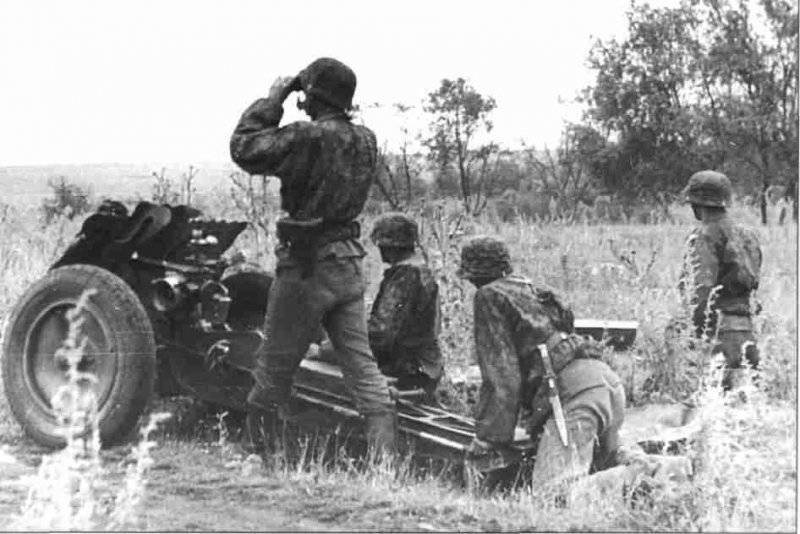
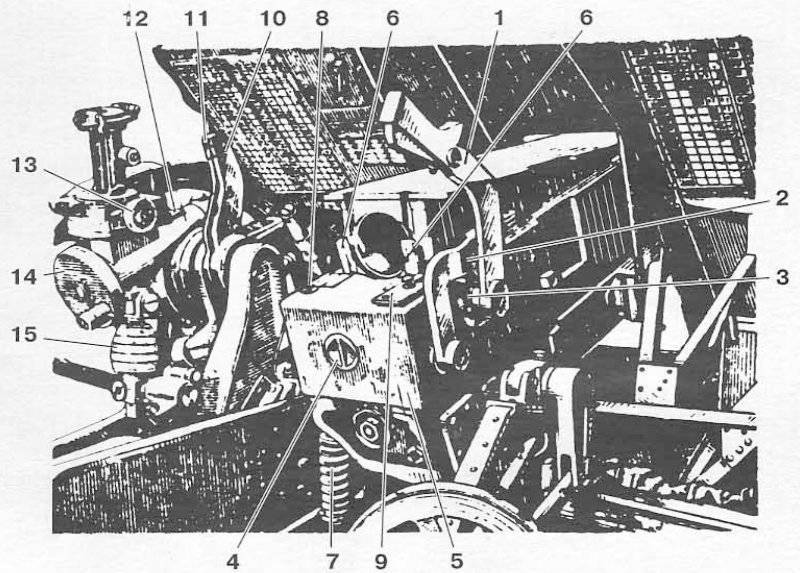
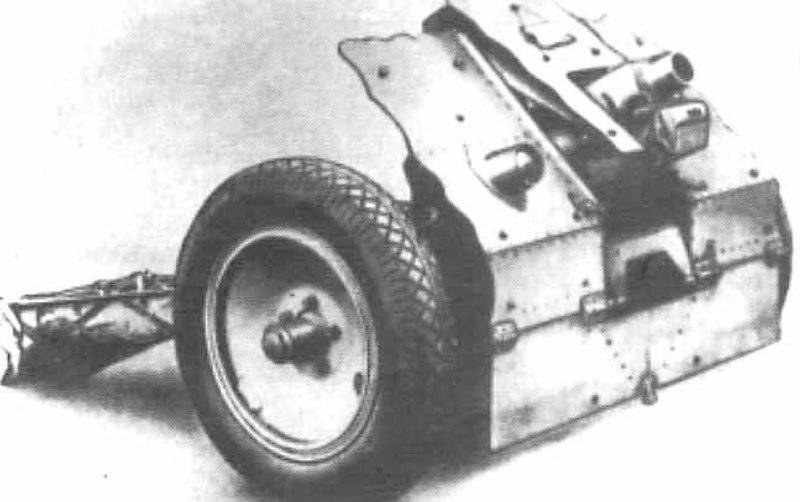
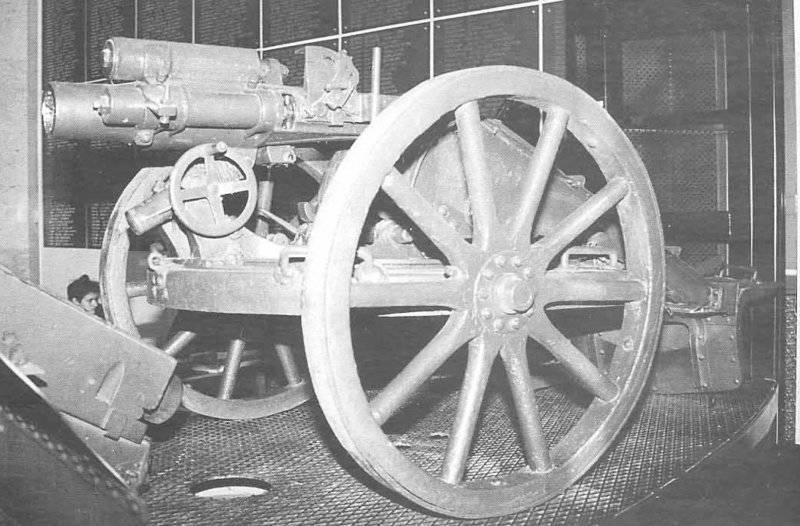
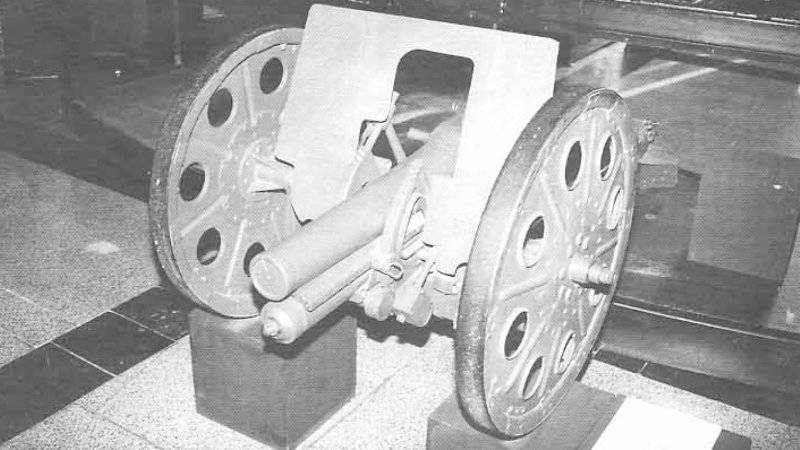
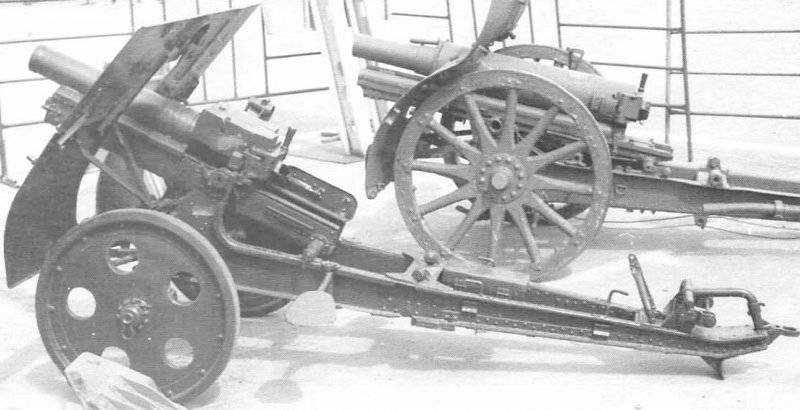
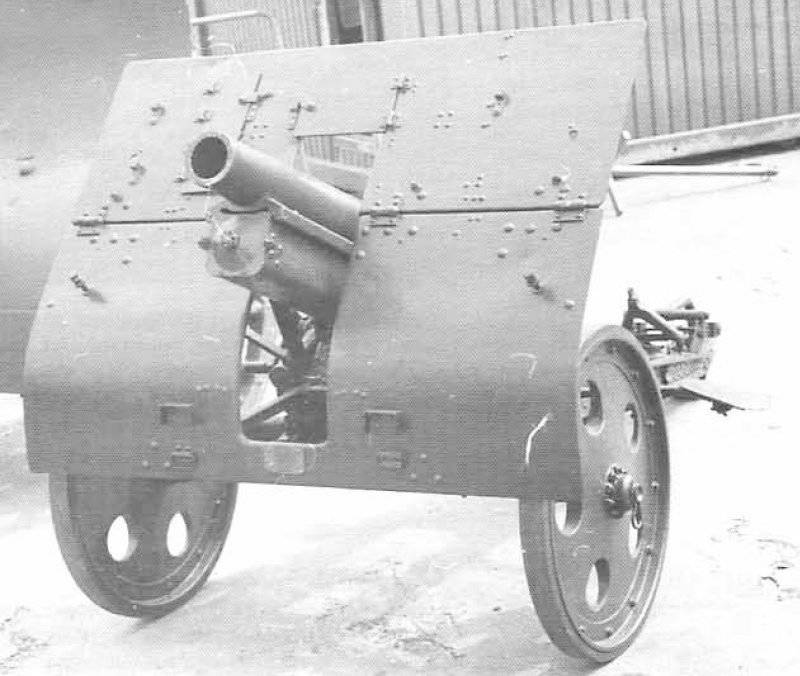
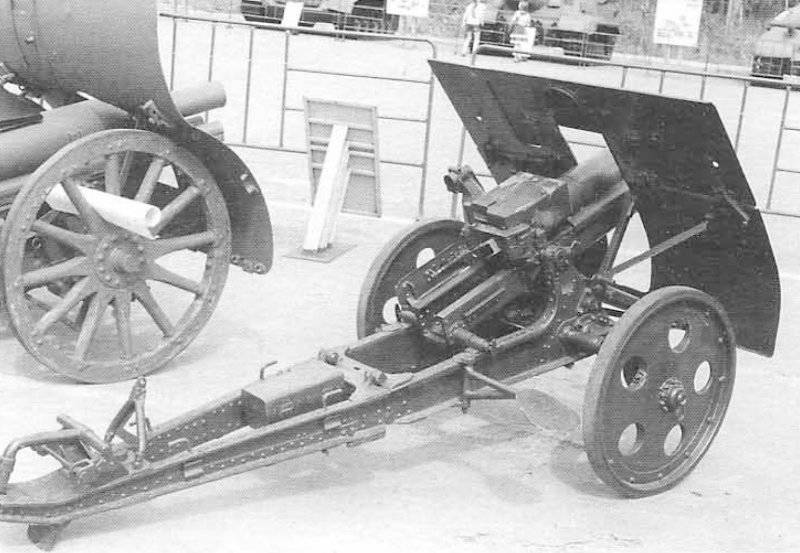
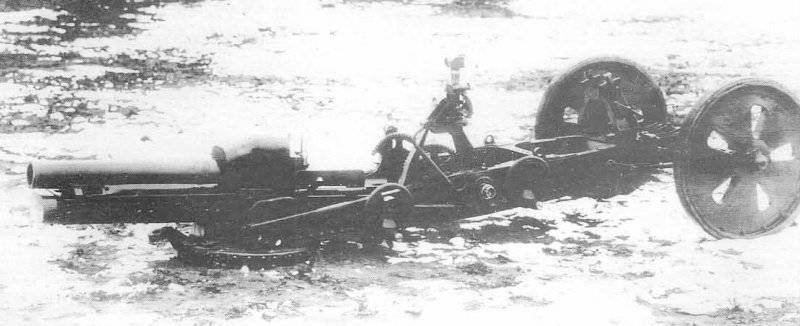
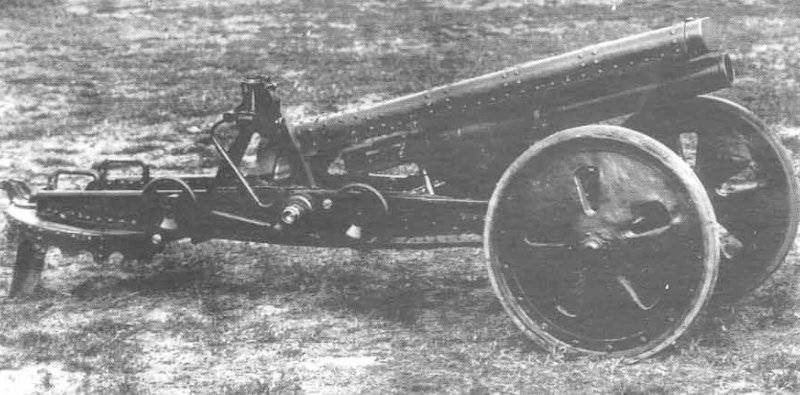
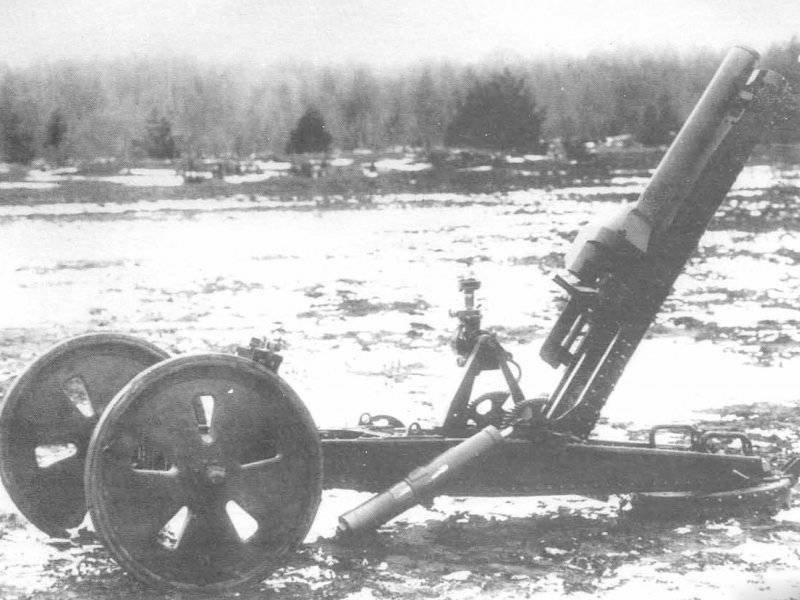
Information